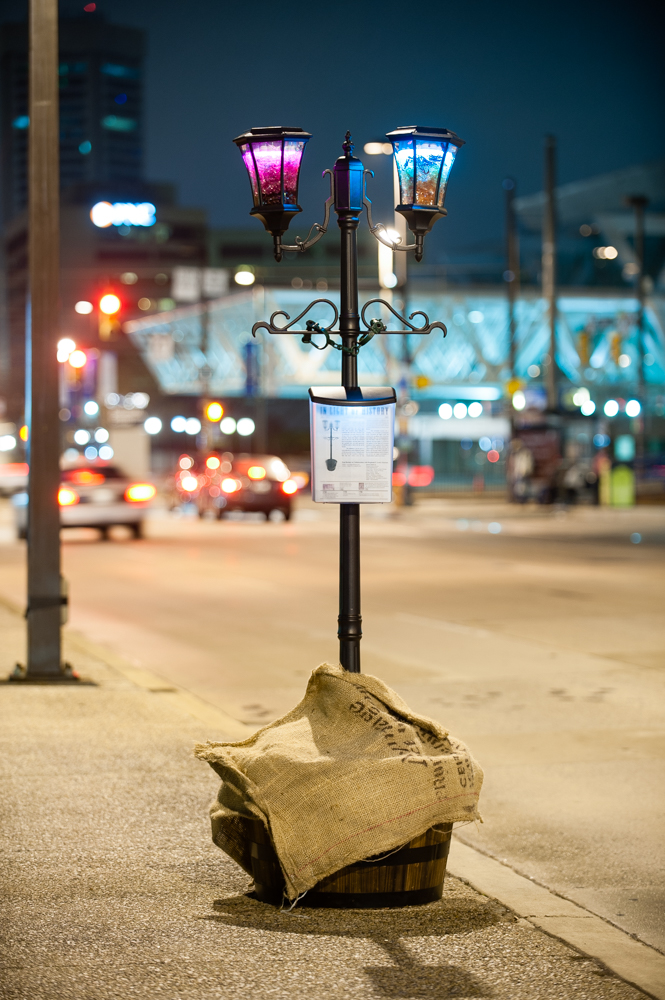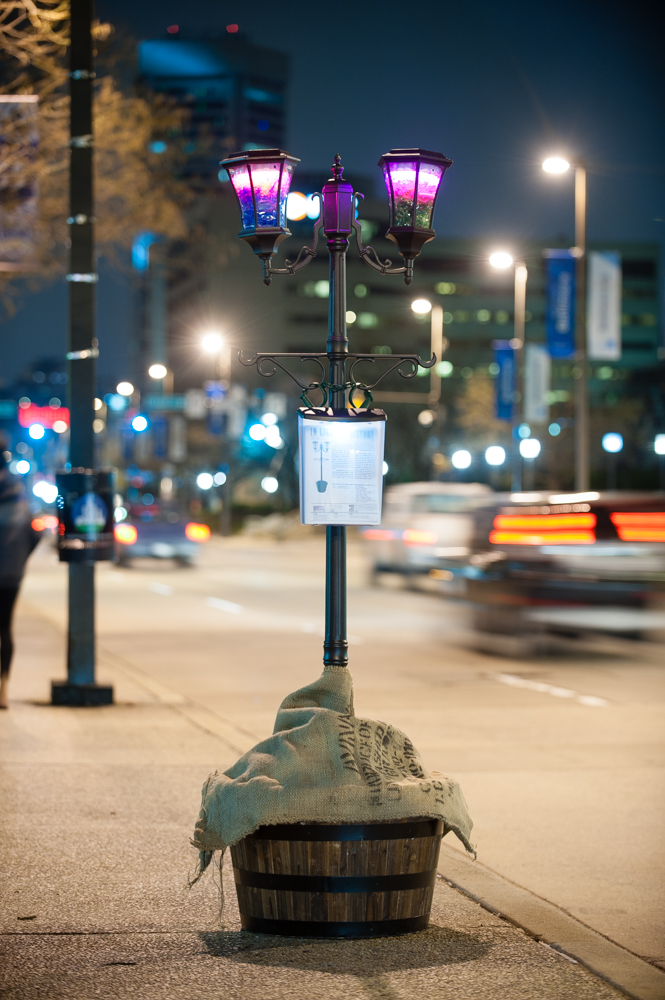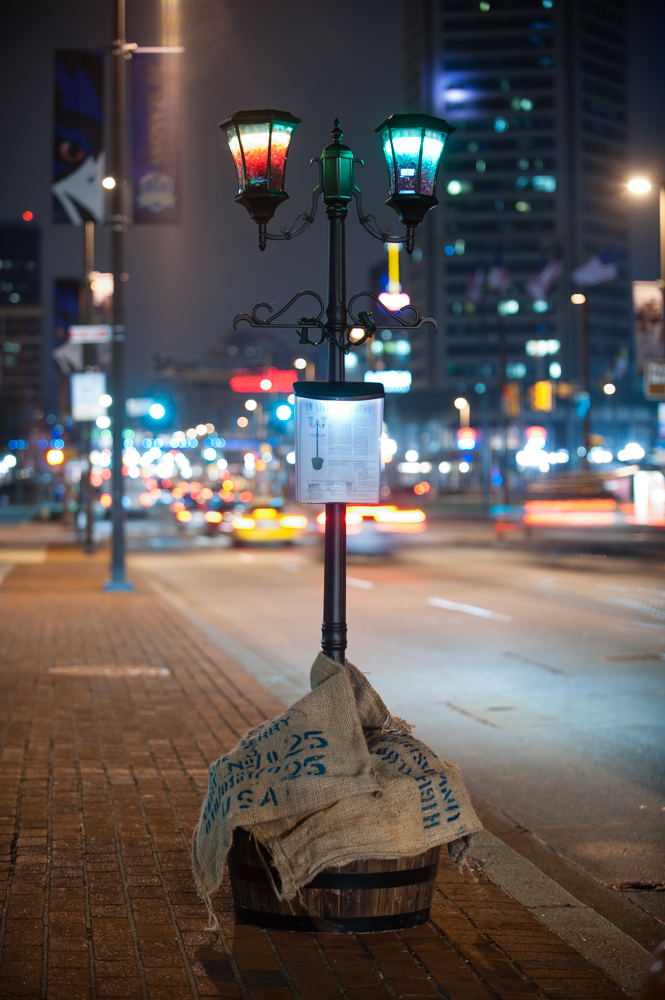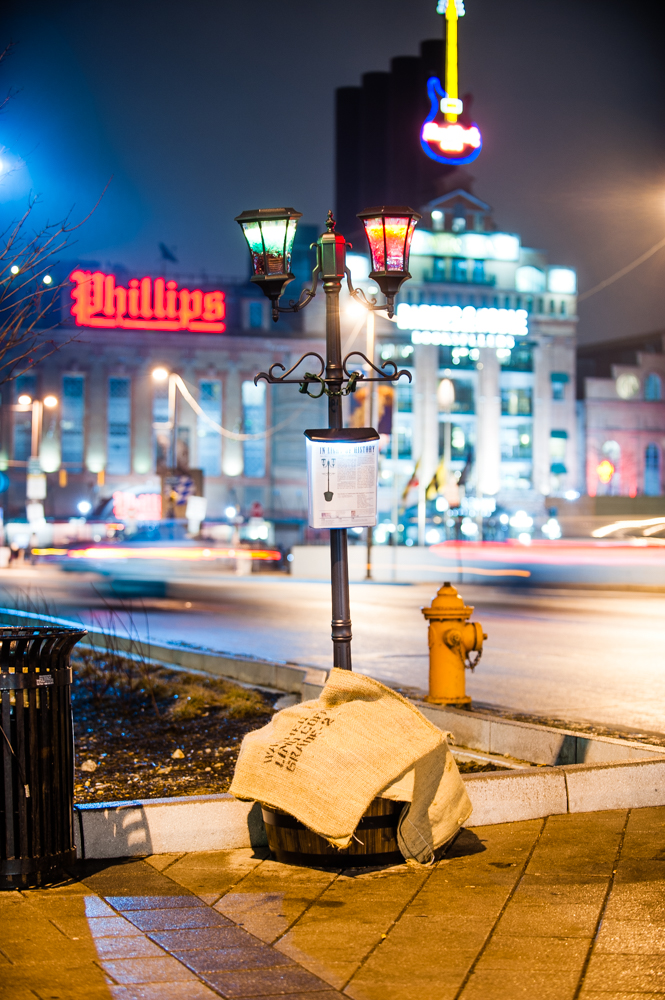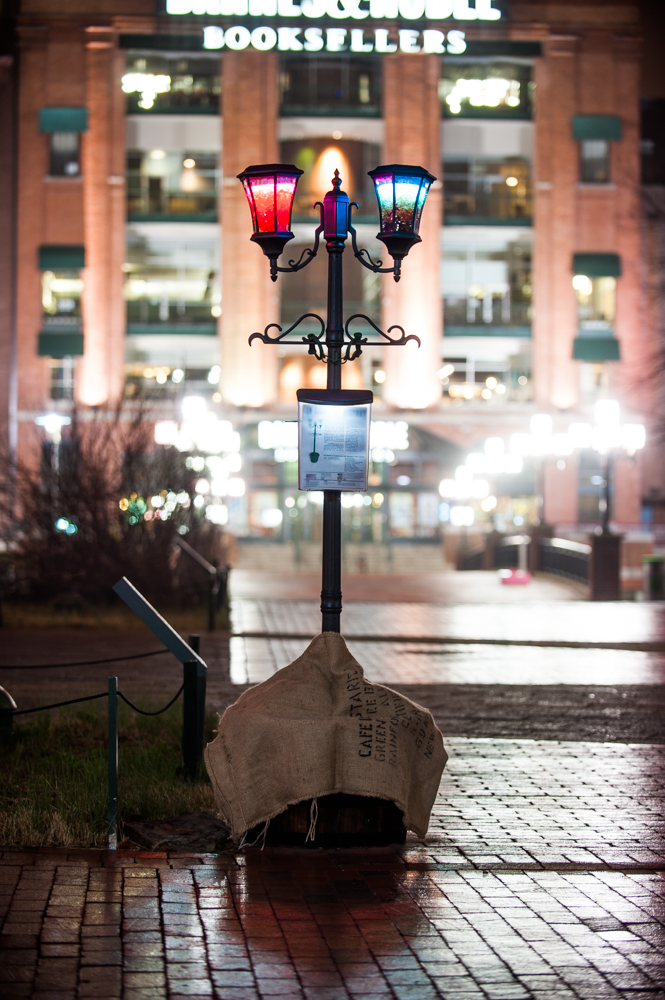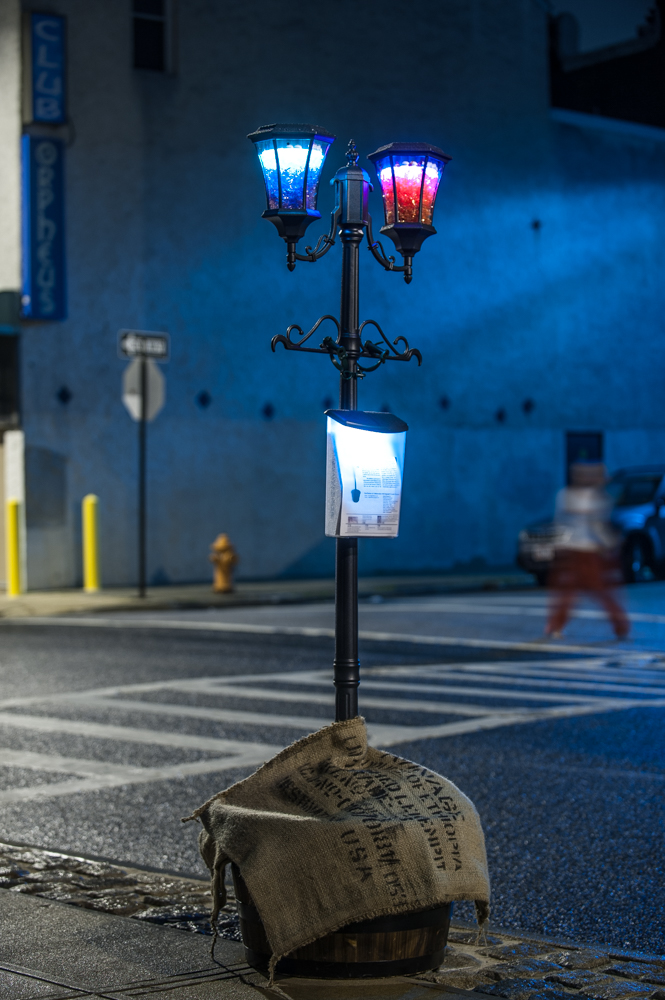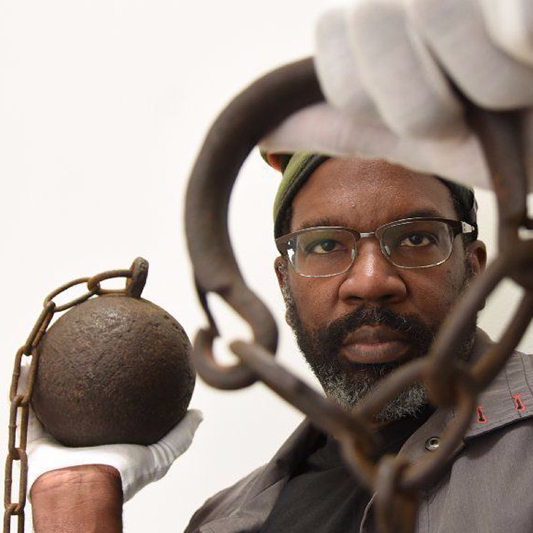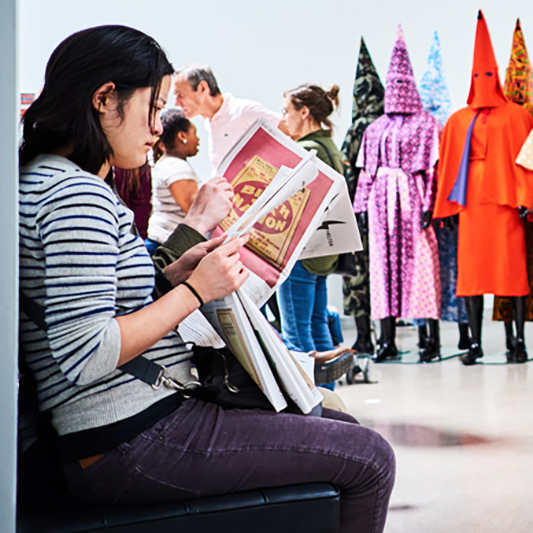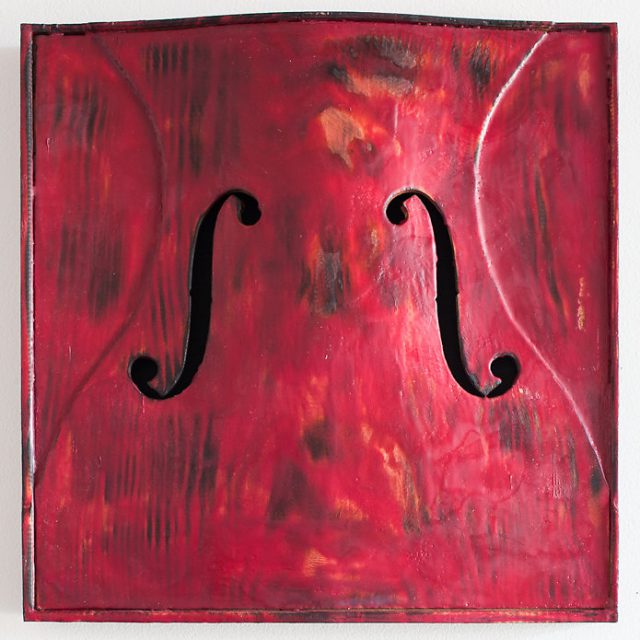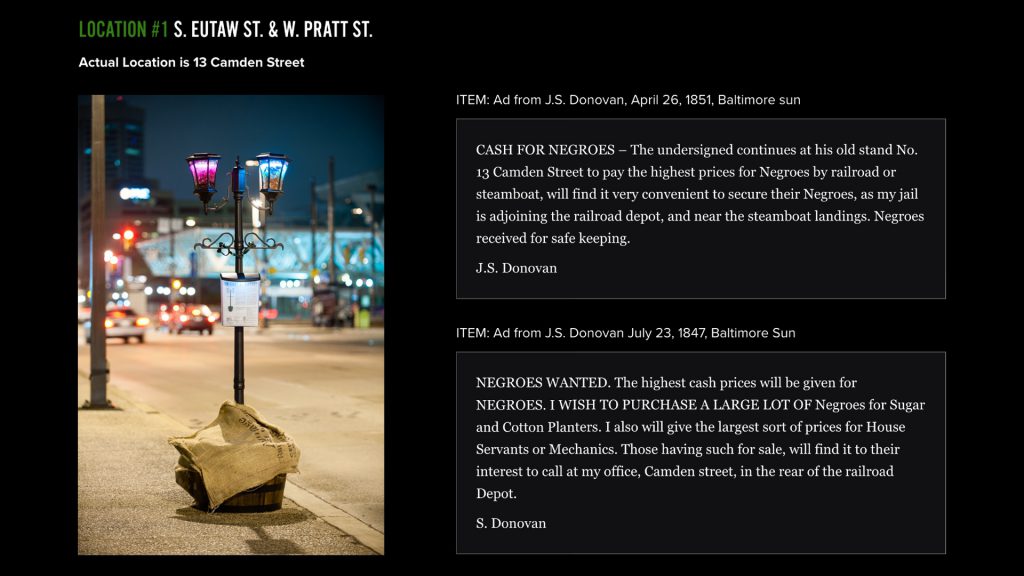
As part of Baltimore’s first Light City Festival, In Light of History offers an opportunity for viewers to reflect on Baltimore’s domestic slave trade. Old-fashioned street lamps with colored lights mark select locations along Baltimore’s waterfront that were once prominent sites for participants in the trade during the 1830s through 1850s. Slave dealers and Baltimore merchants transported African American slaves in and out of the the city, advertised their human property and their desire to buy, and negotiated sales and rental agreements to fulfill the needs for labor in the city and far beyond.
This installation is just the start of a project intended to explore Baltimore’s stories of both slavery and freedom. During the same time the slave trade flourished in Baltimore, there were slave owners in the city who voluntarily freed their slaves, abolitionists who called for an end to slavery, philanthropists who began schools for blacks, and a population of free blacks that far exceeded those enslaved, working as skilled laborers and artisans across the city.
This site includes more of the newspaper articles, books, documents and digital media that informed the City Light Festival installation. The history of the lives of Baltimore’s merchants and slave traders, its abolitionists and agitators, its free black and immigrant populations weave together to tell a complex story of economic growth, survival, and cultural change. We hope that In Light of History will encourage further exploration of the facts behind Baltimore’s history of tragedy and survival, and inspire conversations of what this history implies for our future.

